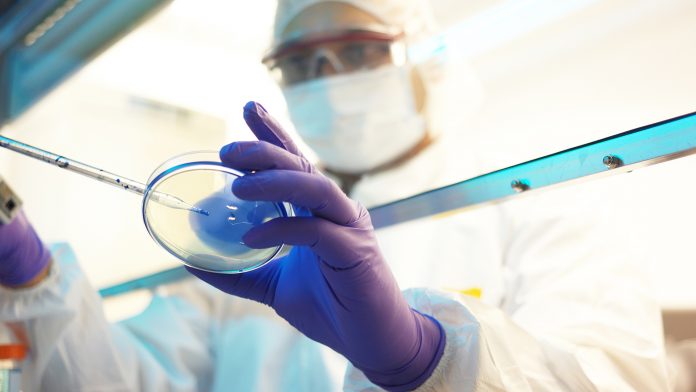
Martin Heidecker, CIO of AMR Action Fund outlines the need for a sustainable ecosystem of research and development for antimicrobials and how the Fund is working to facilitate this goal.
There is no intervention for evolution. The rise of antimicrobial-resistant pathogens makes this painfully clear. In 2019, drug-resistant bacterial infections directly killed 1.27 million people, more than AIDS or malaria, according to findings published recently in The Lancet.
While these startling figures are new, the threat of AMR is not. Bacteria have been evolving mechanisms to evade manmade medications since the advent of penicillin. Throughout the mid-twentieth century, scientists and industry kept pace in this evolutionary foot race by discovering and commercialising dozens of new antimicrobial compounds that extended lifespans, cured patients around the world of debilitating infections, and made possible modern medical interventions such as surgery and organ transplantation. Unfortunately, over the past thirty years, declining investment, market challenges, and scientific obstacles have dramatically slowed the pace of antibiotic innovation.
There is no silver bullet for the AMR crisis, no quick fix. The nature of bacterial evolution is such that the world needs new antibiotics today, and it is going to keep needing new antibiotics for as long as humans walk the earth.
Recognising this problem, the International Federation of Pharmaceutical Manufactures and Associations, the World Health Organization, the European Investment Bank, the Wellcome Trust, and other philanthropies coalesced behind the idea of creating the AMR Action Fund. The Fund follows a traditional venture capital model and will, over the course of the coming years, make equity investments totalling approximately $1 billion into a range of clinical-stage biotechnology companies. The companies we invest in could be developing traditional small-molecules or pursuing novel approaches such as monoclonal antibodies, peptide drugs, or phages. Their modality does not matter. What does matter is that they are developing promising treatments for priority drug-resistant pathogens identified by the WHO and the US Centers for Disease Control and Prevention.
Antimicrobial innovation
To appreciate the significance of the AMR Action Fund and our near- and long-term goals, it helps to understand the role small biotech companies play in the development of new antimicrobials and the limited financing options available to them. There are currently 64 antibacterial drug candidates in the clinical-stage pipeline, according to a recent report from the Biotechnology Industry Organization (BIO), and 80% of those compounds are being developed by small biotechs.
The fact that biotechs serve as the engine of innovation for new antimicrobials is not necessarily noteworthy—the same is true for many therapeutic areas, be it oncology, rare diseases, or central nervous system disorders. What is notable, however, is that these companies have managed to push treatments into the pipeline despite a dearth of private investment. Consider that venture capital funding of US antibacterial-focused companies over the last decade totalled $1.6bn. For comparison, venture capital funding for oncology topped $26bn in that same period.
From certain perspectives, the lack of private equity invested in antimicrobials is understandable. Like all drugs, the process of taking an antimicrobial from discovery through clinical testing and to market is long, costly, and fraught with risk. The catch is that when a new antimicrobial gains regulatory approval, rarely will they reach blockbuster status under current market conditions because, unlike medications to manage chronic diseases such as diabetes or high cholesterol, antibiotics are administered only for a few days. On top of that, new antibiotics must be used sparingly, often as tools of last resort, to reduce the likelihood that bacteria will develop resistance to the drug. Taken together, these factors translate into modest sales figure, as noted in a recent analysis in Antimicrobial Agents and Chemotherapy, the highest revenue for a patent-protected antimicrobial in the US in 2018 was $138m. That same year, sales of the blood thinner apixaban totalled $3.76bn, and that was the tenth-highest revenue generating medication of the year. This stark disparity highlights fundamental flaws in the market, which are dissuading investors, stemming innovation, and accelerating a global health crisis.
Building a sustainable ecosystem of antimicrobial R&D
No other class of drugs has served humanity’s collective interests like antibiotics have. Yet, they remain dangerously undervalued in today’s marketplace because sales volumes are the primary benchmark by which a drug’s success is measured. Fortunately, it appears that governments around the world now recognise this problem and are crafting policies known as pull incentives to help properly value antibiotics. That is good for global health and good for private investment.
Support for pull incentives has been slowly building in recent years and received a major boost a few months ago when the G7 Finance Ministers issued a statement declaring that all members have committed to take steps to address antibiotic market failures. In the US, legislators are considering the PASTEUR Act, a bill that would create a subscription-style model in which companies that bring new and critically needed antimicrobials to market are paid $750m to $3bn over the course of 10 years for steady access to the drug, regardless of how often it is used. The UK is piloting a similar subscription model, and the European Commission is evaluating a range of pull incentives as part of its forthcoming Pharmaceutical Strategy for Europe, including transferable exclusivity extensions.
Pull incentives are a big part of the puzzle, but they are not a panacea, nor will they be enacted overnight. The AMR Action Fund’s strategic investments will help portfolio companies drive innovation forward while policymakers work out the details of pull incentives. But we are not interested in serving merely as a stopgap. Our goal is to lay the groundwork for a sustainable ecosystem of antimicrobial R&D to ensure that new treatments are regularly being discovered, tested, and advanced through the pipeline. It is the only way to ensure that clinicians will have the tools they need as bacteria continue to evolve and patients continue to need access to effective medications.
An important part of building this sustainable ecosystem is to bring private equity back into this space. In that regard, the AMR Action Fund is very much a first mover. We will generate value among our portfolio companies by tapping into our scientific and industry expertise and setting them up for successful acquisitions, IPOs, and product launches—something we are uniquely positioned to do given our close relationships with many of the world’s leading pharmaceutical firms, which have backed the Fund since day one. By achieving modest returns on our investments, the Fund will have created a pool of capital that can then be recycled into the space and help the next generation of antibiotic innovators bring products to market. Our success will signal to other venture funds and sources of private equity that antimicrobials are a viable investment option that can generate returns while also having a dramatic impact on patients’ lives.

There are already signs that this transformation is underway. We have successfully built relationships with co-investors across North America, Europe, and Asia for our first investments, firms such as Boehringer Ingelheim Venture Fund and Novo Holding’s REPAIR Impact Fund have been increasingly active in the antimicrobial space as of late, and Basilea recently announced it is prioritising its R&D pipeline around anti-infectives.
This is arguably the most exciting and important time to be working on antimicrobials since Alexander Fleming kicked off the Golden Age of Antibiotics with the discovery of penicillin. Governments are taking action, the biopharma industry is collaborating in new and unexpected ways, and civil society is raising the profile of AMR like never before. Now we need to ensure that we continue to evolve—much like the bacteria we are fighting.
Martin Heidecker
CIO
AMR Action Fund
www.amractionfund.com
This article is from issue 21 of Health Europa Quarterly. Click here to get your free subscription today.










